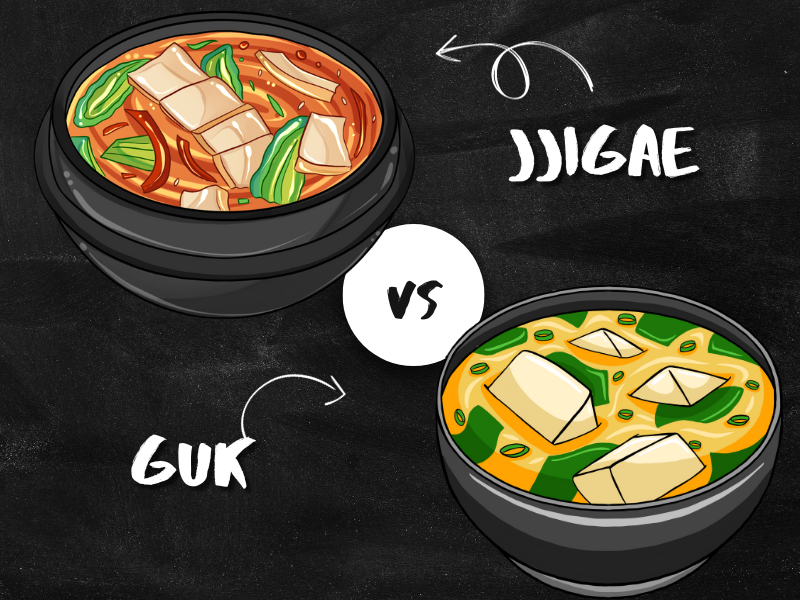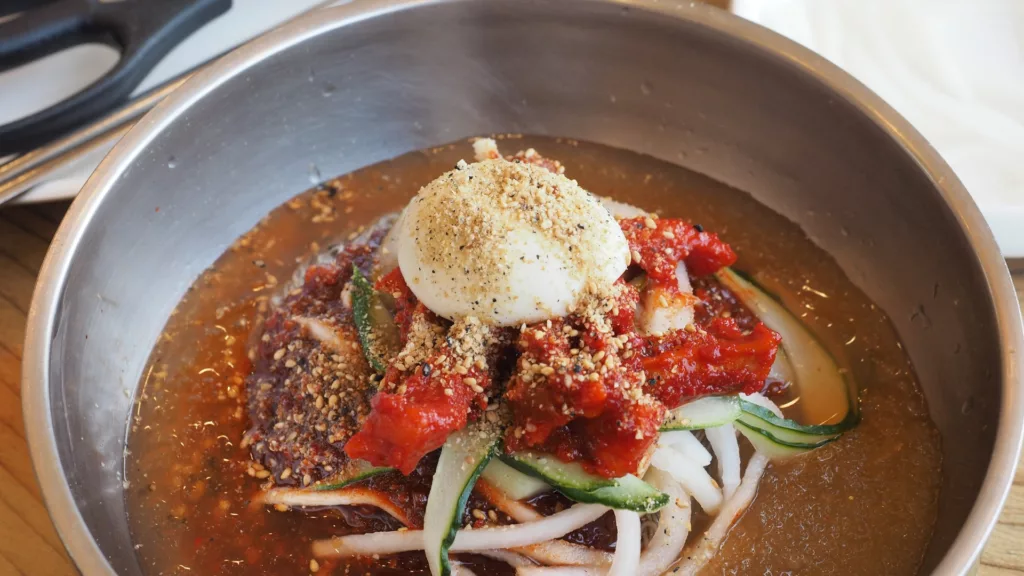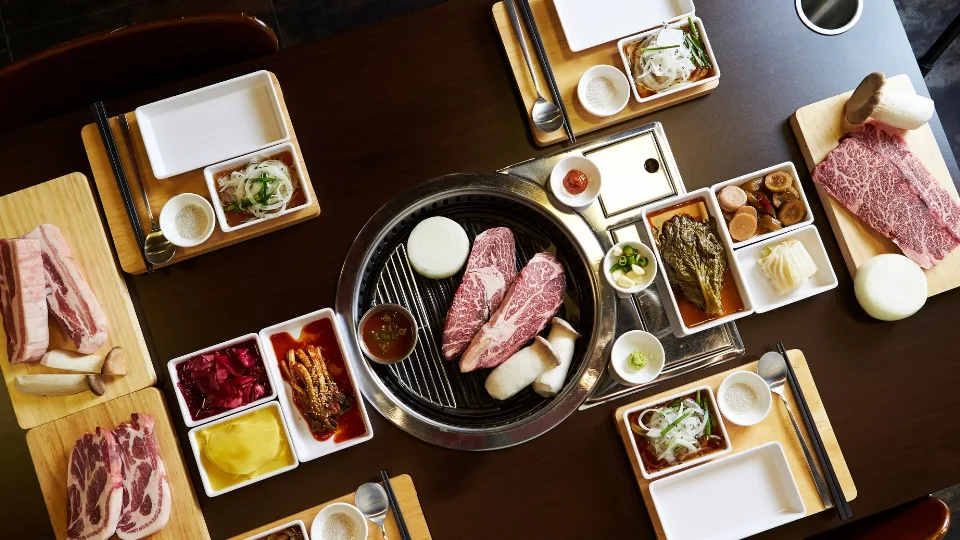When one ventures into the rich world of Korean cuisine, the plethora of soup-type dishes can be overwhelming. However, two standout categories are “Jjigae” and “Guk”. Both are integral to the Korean dining table, but each has its unique characteristics and significance.
Jjigae (찌개)
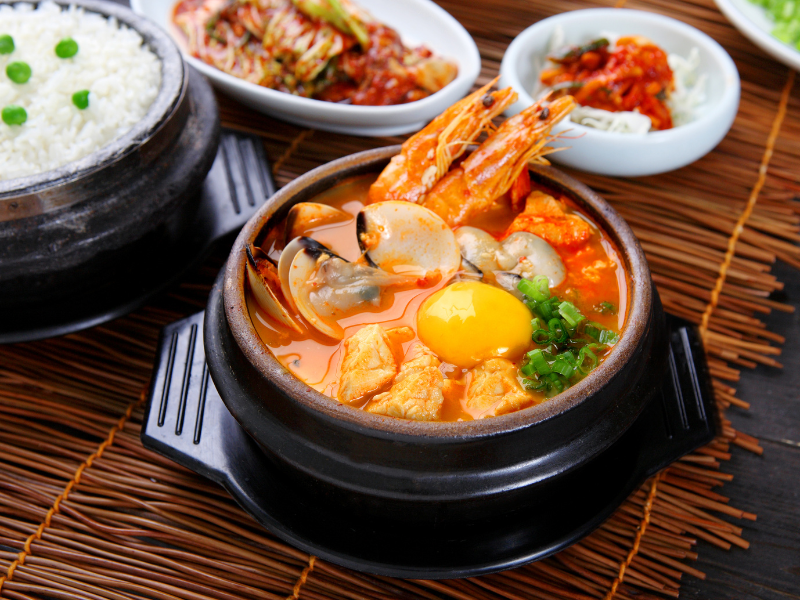
Definition: Jjigae is a dish with less broth than guk or tang. It’s generously loaded with ingredients such as meat, seafood, clams, and vegetables.
Origins: Historically, both guk and jjigae were referred to as ‘갱’ or ‘gang’. As Korean cuisine diversified over time, the distinction between the two evolved.
Characteristics: The beauty of jjigae lies in its versatility. Various ingredients like vegetables, tofu, seafood, and meats are combined and boiled together, often in earthenware pots, creating a harmonious and layered flavor. While it can be classified based on the primary ingredient, like fish or tofu, jjigae is often a mix of these. The seasoning used also determines the jjigae type – spicy gochujang (red pepper paste), savory doenjang (soybean paste), or even clear broths.
Popular Types:
- Kimchi Jjigae (김치찌개): A spicy stew made predominantly with fermented kimchi.
- Doenjang Jjigae (된장찌개): A rich, hearty stew seasoned with Korean fermented soybean paste.
- Budae Jjigae (부대찌개): Also known as ‘Army Base Stew’, this dish combines elements of American and Korean ingredients.
- Soondubu Jjigae (순두부찌개): A silky stew made with soft tofu and often a choice of meat or seafood.
Guk (국)
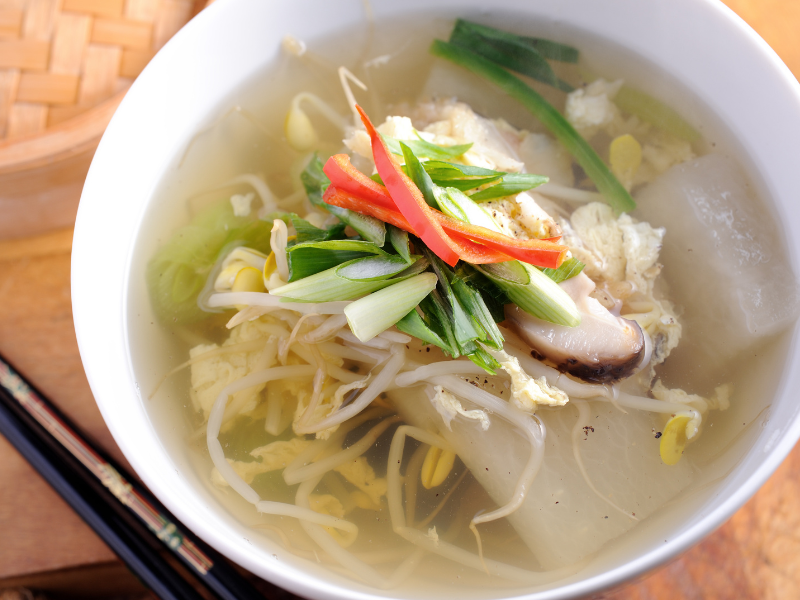
Definition: Guk is a dish where ingredients like vegetables, fish, or meats are boiled in a substantial amount of water.
Significance: In Korea, rice (밥) serves as the primary food, with guk being its essential accompaniment. Whether it’s a simple or grand meal setting, the presence of guk is almost a given.
Characteristics: The essence of guk comes from the broth, which is made from a variety of ingredients, including meats, fish, vegetables, and seasonings like ganjang (soy sauce), gochujang, and doenjang. The type of meat used, often the lesser cuts or parts like intestines, bones, or ribs, significantly impacts the flavor, making the broth richer.
Popular Types:
- Miyeok Guk (미역국): A clear soup made with seaweed, often enjoyed during birthdays as it symbolizes a long and healthy life.
While jjigae and guk are essential components of Korean cuisine, recognizing their intricacies will enrich your culinary journey. Whether you’re enjoying the spicy tang of kimchi jjigae or the nourishing warmth of miyeok guk, you’re taking part in a family tradition. So, the next time you sit down for a Korean lunch, remember to appreciate these soupy delicacies.
autumn cafe bread cafe chuseok chuseok food dessert donut foliage view foodtruck galbijjim gentlemonster gochujang gyeongbokgung gyeongbokgung palace highway rest stop jamsil jeon knotted korean cafe korean dessert korean pancake London Bagel Museum miyeok guk newjeans new menu paris baguette ramen ramyeon recipe rice scoville seoul seoul cafe shin ramen shin ramen hack shin ramen the red smokepoint songpyeon soondubu jjigae spc group spiciest ramen ssamjang sykhye winter yakgwa

